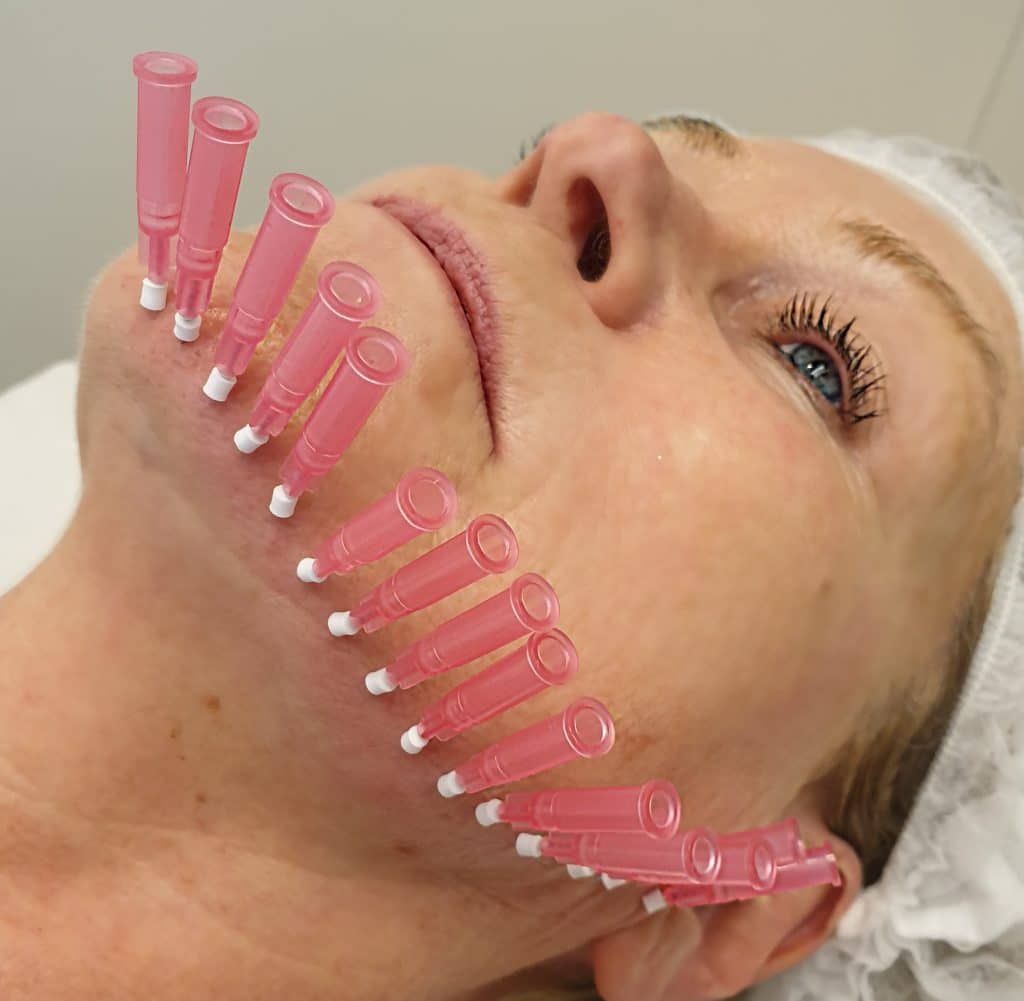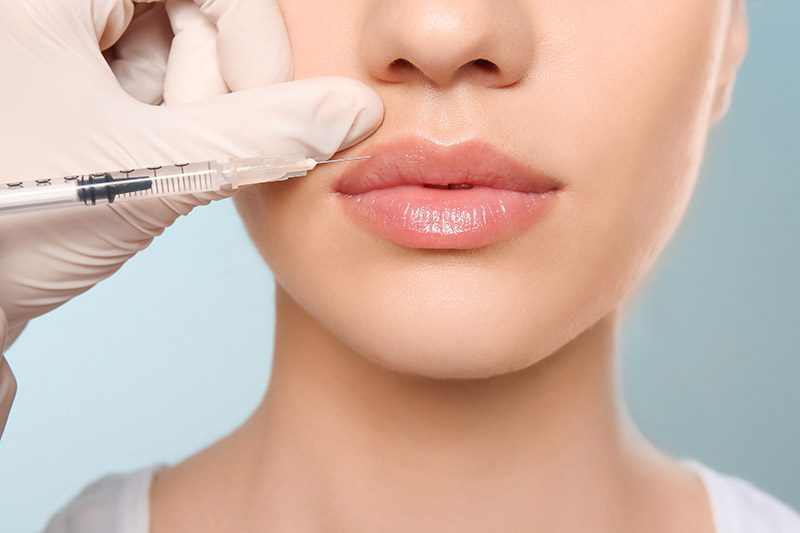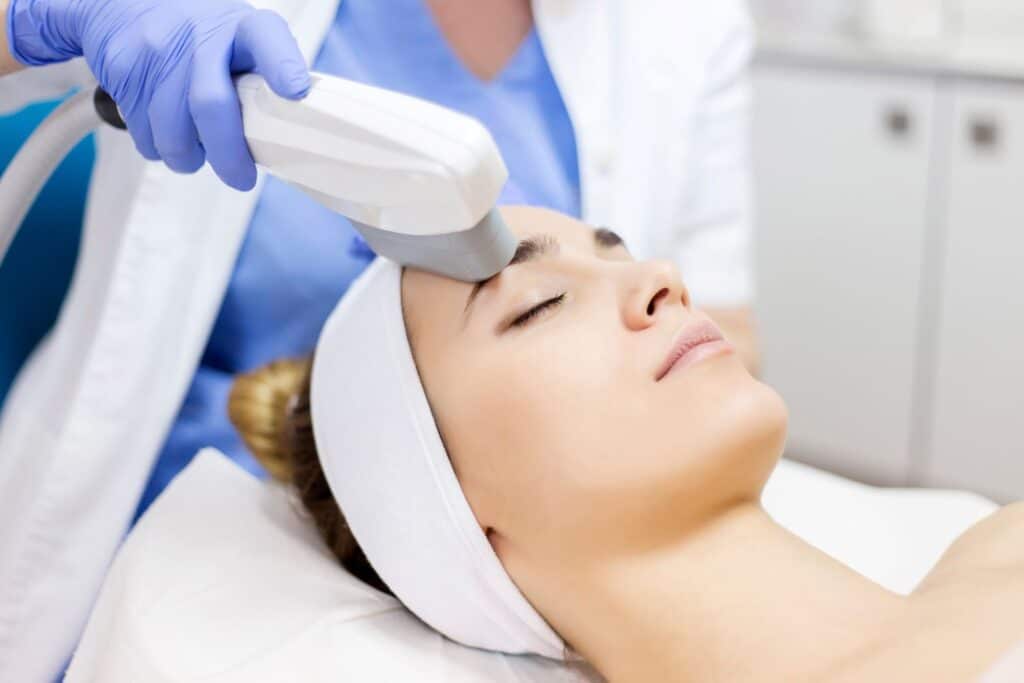Curious about the buttock thread lift cost? This innovative procedure is gaining traction for its ability to enhance and lift without surgical facelifts, surgical threadlifting technique, or invasive surgery. A buttock thread lift uses dissolvable threads to give a subtle yet effective lift, making it a popular choice compared to surgical facelifts and fat grafting. But how much does it really cost? Understanding the price of thread lift treatments can help you decide if this treatment fits your budget. Factors like the number of threads, clinic location, and surgeon expertise all play a role in the final cost of surgical facelifts, fat grafting, and buttock lift procedures at any age. Knowing these details will give you a clearer picture of what to expect financially.
Key Takeaways
- Understand the Procedure: Thread lifts are minimally invasive procedures aimed at lifting and tightening the buttocks using medical-grade thread, suitable for various body types and age groups.
- Cost Variables: The cost of a buttock thread lift can vary widely based on factors like geographic location, surgeon expertise, and the number of threads used.
- Expense Breakdown: Expect to pay for not just the procedure but also consultation fees, anesthesia, and aftercare services for a buttock lift, invasive body thread lift, or buttock enhancement.
- Affordability Solutions: Explore financing options such as payment plans or medical loans to manage the cost of buttock enhancement more effectively.
- Compare Alternatives: Weigh the pros and cons of thread lifts against other enhancement methods like surgical lifts or non-invasive treatments.
- Aftercare Costs: Be prepared for additional expenses related to post-procedure care, especially for treatments like buttock enhancement or invasive body thread lift, which can impact the overall cost.
Understanding Thread Lifts
PDO Threads
PDO thread lifts are a minimally invasive procedure. They use polydioxanone (PDO) threads to lift and enhance the buttocks’ appearance. These threads are inserted under the skin using fine needles for buttock enhancement. Once in place, they provide an immediate lifting effect.
Immediate Lifting
One of the main benefits of butt thread lifts for buttock enhancement is visible lifting right after the procedure. The threads create a support structure for the skin. This helps lift sagging areas and gives a more youthful contour, including buttock enhancement.
Collagen Production
PDO thread lifts also promote long-term benefits. The presence of the threads stimulates collagen production in the skin for buttock enhancement. Collagen is essential for skin texture and elasticity. Over time, this leads to firmer and smoother skin.
Non-Surgical Procedure
Buttock thread lifts are non-surgical. Unlike traditional surgical lifts, they do not require large incisions or general anesthesia for buttock enhancement. This makes them a safer option for many people.
Minimal Downtime
Recovery from a buttock thread lift is quick. Most people can return to their normal activities within a few days after an invasive body thread lift or buttock enhancement. There might be some swelling or bruising after a buttock enhancement or invasive body thread lift, but it is usually minimal.
Advanced Technology
The technology behind thread lifts is advanced. It allows for precise placement of the threads. This ensures optimal lifting and natural-looking results.
Factors Influencing Cost
Type and Number of Threads
The type of threads used can significantly impact the cost. PDO threads are common, but there are also PLLA and PCL threads. Each has different properties and longevity. PDO threads dissolve faster than PLLA or PCL, which may affect the price.
The number of threads required also plays a role. More threads mean higher costs. For example, using 10 threads will cost less than using 20. The complexity of the procedure increases with more threads, adding to the overall expense.
Practitioner’s Expertise
The practitioner’s expertise is another crucial factor. Experienced practitioners often charge more due to their skills and reputation, especially for procedures like body thread lift. Highly skilled professionals ensure better results and safety in body thread lift procedures, justifying the higher fees.
Geographic location also matters. Clinics in major cities or affluent areas usually have higher prices. This is due to higher operational costs and demand for premium services.
Combined Treatments
Combining PDO threading with other treatments like Sculptra Aesthetic injections can increase the total cost. Sculptra injections add volume and stimulate collagen production. When combined with thread lifts, they enhance the overall effect but also add to the expense.
Patients opting for multiple procedures, including a body thread lift, should expect a higher bill. However, combining treatments like a body thread lift can provide comprehensive results, making it worth the investment.
Breakdown of Expenses
Consultation Fee
The first cost to consider is the consultation fee. Most clinics charge for an initial consultation. This fee can range from $50 to $200. It covers the time spent discussing your goals and assessing your suitability for the body thread lift procedure.
Cost of Threads
The threads themselves are a significant part of the expense. The type and number of threads used will affect the total cost. Each thread can cost between $100 and $300. For a typical buttock thread lift, several threads may be required.
Additional Treatments
The patients opt for additional treatments like Sculptra Aesthetic injections and body thread lift. These injections help enhance the results of a body thread lift by stimulating collagen production. The cost for Sculptra injections ranges from $800 to $1,000 per vial for a body thread lift. Multiple vials might be needed depending on the desired outcome of the body thread lift.
Anesthesia Fees
Anesthesia is often necessary for comfort during the procedure. Local anesthesia is commonly used for a body thread lift, which can add another $200 to $500 to the total cost. In some cases, general anesthesia might be preferred for a body thread lift, which is more expensive.
Facility Fees
Facility fees cover the use of the clinic or hospital where the body thread lift procedure takes place. These fees vary widely based on location and facility type. On average, expect to pay between $500 and $2,000 for facility fees.
Variations in Cost
Costs can vary based on individual needs and desired outcomes. More complex cases may require more threads or additional treatments, increasing the overall price. Geographic location also plays a role in pricing differences.
By understanding these components, you can better prepare for the financial aspects of a buttock thread lift. Always consult with a qualified professional to get an accurate estimate tailored to your specific needs.
Affordability Concerns
Perceived Cost
Many people worry about the high cost of cosmetic procedures. Buttock thread lifts are no exception. The price can range from $2,000 to $4,000 per session. This cost often depends on the number of threads needed and the complexity of the procedure.
e may find this price steep. However, it’s worth considering the primary benefits. A buttock thread lift offers a non-surgical option to lift and firm the buttocks. Unlike invasive surgeries, it has a shorter recovery time.
Long-term Value
The long-term value of a buttock thread lift is significant. Traditional surgeries like butt lifts or implants can be more expensive. These surgeries also come with longer recovery periods and higher risks.
Buttock thread lifts provide results that last up to two years. This duration is longer compared to some other non-surgical treatments. Repeated sessions might be necessary, but they are less frequent than other options.
This procedure can also reduce dimpling and improve skin texture. These added benefits enhance its overall value.
Cost-Benefit Ratio
Assessing the cost-benefit ratio involves several factors. First, consider the effectiveness of the procedure. Buttock thread lifts offer immediate results with minimal downtime.
Next, think about the duration of these results. Lasting up to two years, this procedure provides good value for its cost. Comparing this with other treatments requiring frequent touch-ups shows its advantage.
Lastly, weigh in personal goals and expectations. If looking for a subtle lift and firmer appearance without surgery, this procedure fits well.
Alternatives and Comparisons
Comparing alternatives helps in understanding affordability better. Surgical options like Brazilian Butt Lift (BBL) can cost between $8,000 to $15,000. These come with higher risks and longer recovery times.
Dermal fillers are another option but need regular maintenance every six months to a year. The costs add up over time, making them more expensive in the long run.
By choosing a buttock thread lift, one avoids extensive surgical risks while still achieving desired results.
Financial Planning
Planning finances for cosmetic procedures is crucial. Start by consulting with qualified professionals like Dr. Leslie who specializes in such treatments.
Ask about payment plans or financing options available at clinics. Some offer installment payments which make the process more manageable.
Researching multiple clinics can help find competitive pricing without compromising quality.
Payment Options
Financing Plans
Many clinics offer financing plans. These plans help patients spread the cost over several months. This makes the procedure more affordable. Some clinics have partnerships with third-party financing companies. These companies specialize in medical and cosmetic procedure loans.
Patients can apply for these loans directly through the clinic. Approval is often quick, sometimes within minutes. This option allows patients to proceed with their desired date for the buttock thread lift without delay.
Third-Party Partnerships
Clinics often work with third-party financing companies like CareCredit or Alphaeon Credit. These companies provide specialized loans for medical procedures. Patients can choose from various payment schedules.
Options may include:
- Short-term plans: Typically 6 to 12 months with low or no interest.
- Long-term plans: Ranging from 24 to 60 months with fixed interest rates.
These partnerships make it easier for clients to manage costs. It also provides flexibility in choosing a plan that fits their budget.
Promotions and Discounts
Special promotions or discounts are sometimes available. New patients might receive a discount on their first procedure. Clinics may also offer package deals for combining procedures.
For example, a patient could get a discount when combining a buttock thread lift with dermal fillers. These promotions aim to attract new clients and provide added value to existing ones.
Insurance Coverage
Most insurance plans do not cover cosmetic procedures like buttock thread lifts. However, some exceptions exist if the procedure is deemed medically necessary. Patients should consult their insurance provider to confirm coverage details.

Comparing Enhancement Methods
Surgical Lifts
Traditional buttock enhancement methods include augmentation surgery. This involves implants or fat grafting. The cost ranges from $4,000 to $10,000. Recovery time can be several weeks. Results are typically long-lasting.
Surgical lifts provide significant improvement in shape and size. However, they require general anesthesia. There are also risks of complications like infections.
Non-Surgical Fillers
Dermal fillers offer a non-surgical option for buttocks enhancement. They involve injecting substances to add volume. Costs range from $2,000 to $5,000 per session. Recovery time is minimal, often just a few days.
Fillers provide immediate results but are temporary. Effects last around 12 to 18 months. They need regular maintenance for sustained results.
Thread Lifts
Buttock thread lifts use special threads to lift and tighten the skin. The cost is between $2,500 and $4,500. Recovery time is shorter compared to surgery, usually about one week.
Thread lifts are minimally invasive. They stimulate new collagen production for natural-looking results. The effects can last up to two years, longer than fillers but shorter than surgical options.
Unique Benefits
Thread lifts have unique benefits over other techniques. They require only local anesthesia. This reduces risks compared to general anesthesia used in surgery.
The procedure leaves minimal scarring. Threads dissolve naturally over time. This makes it a safer option with fewer side effects.
Cost Comparison
Comparing costs helps in making an informed decision:
- Surgical Lifts: $4,000 – $10,000
- Non-Surgical Fillers: $2,000 – $5,000 per session
- Thread Lifts: $2,500 – $4,500
Thread lifts are more affordable than surgery but may cost more than fillers initially.
Recovery Time
Recovery time varies among methods:
- Surgical Lifts: Several weeks
- Non-Surgical Fillers: Few days
- Thread Lifts: About one week
Aftercare and Additional Costs
Recovery Process
Following a buttock thread lift, the recovery process is crucial. Patients should follow specific aftercare instructions given by their doctors. These instructions help in maximizing the benefits of the procedure and minimizing any complications. Typically, patients must avoid sitting directly on their buttocks for at least two weeks.
The treatment area may feel sore or swollen for a few days. Doctors often recommend wearing compression garments to reduce swelling and support the new shape. Light activities can be resumed within a few days, but strenuous activities should be avoided for up to six weeks.
Follow-up Visits
Post-treatment care often includes several follow-up visits. These visits are essential to ensure proper healing and to monitor the results. Most cosmetic surgery institutes include the first follow-up visit in the initial cost. However, additional visits might incur extra charges.
e patients may require touch-up treatments to maintain or enhance their results. These additional treatments can add to the overall cost of the procedure. It is important to discuss these potential costs with your surgeon beforehand.
Additional Treatments
In some cases, patients might need other treatments to achieve their desired look. For instance, combining a thread lift with other procedures like butt implants or non-surgical enhancements can lead to better results. Each additional treatment will increase the total cost.
Patients should also consider potential side effects such as bruising, infection, or asymmetry. Treating these complications might require further medical attention, adding to the overall expense.
Economic Advantages
One significant advantage of a buttock thread lift is the minimal downtime required. Unlike more invasive procedures like surgical BBL, recovery is quicker. This means less time off work and daily activities, which can be economically beneficial.
Most patients can return to work within a week, reducing the need for extended leave. This not only saves money but also allows for a quicker return to normal life.
Value Assessment
Aesthetic Benefits
A buttock thread lift can enhance body contour. It provides a more youthful appearance. The procedure lifts and tightens sagging tissues. Results are often immediate.
Patients report feeling happier with their bodies. This boost in confidence can be life-changing. Many feel more comfortable wearing different clothes. They enjoy their improved looks.
Psychological Impact
Feeling good about one’s appearance affects mental health. Increased self-esteem leads to better overall well-being. Many patients find themselves more outgoing and social.
e people experience less anxiety about their bodies. They feel more confident in public spaces. This shift can improve relationships and social interactions.
Testimonials
Numerous testimonials highlight the benefits of the procedure. For example, Jane, a 35-year-old mother, felt insecure after childbirth. She opted for a buttock thread lift.
Jane reported feeling much better post-procedure. Her confidence soared. She felt younger and more attractive.
Another case involves John, a 40-year-old man who lost weight. He had excess skin on his buttocks. After the thread lift, he felt more confident at the gym and in social settings.
Cost vs. Benefit
The cost of a buttock thread lift varies. It depends on several factors:
- The surgeon’s experience
- Geographic location
- Extent of the procedure
Despite costs, many find the investment worthwhile. The psychological and aesthetic benefits often outweigh the financial expense.
Long-term Value
The results of a buttock thread lift can last up to two years. Maintaining results requires minimal upkeep. Regular physical activity helps sustain the lifted appearance.
Patients should avoid strenuous exercise initially. This reduces swelling and ensures proper healing.
FAQs on Thread Lifts
Safety Concerns
Butt thread lift procedures are considered safe. Dissolvable threads are used to lift the skin, which reduces risks. The threads dissolve naturally over time. Minor side effects like swelling and bruising may occur but usually resolve within a week.
The procedure is minimally invasive. It does not require large incisions or general anesthesia. This lowers the risk of complications compared to traditional surgeries.
Pain and Recovery
Many people worry about pain during and after the procedure. Local anesthesia is used to numb the area, so there is minimal discomfort. Some patients report feeling a slight pulling sensation as the threads are inserted.
Recovery time is relatively short. Most people can return to normal activities within a few days. Avoid strenuous activities for about two weeks to ensure proper healing.
Longevity of Results
Results from a butt thread lift can last up to two years. Dissolvable threads stimulate collagen production, which helps maintain the lift even after the threads dissolve.
Repeat procedures are possible if you want to maintain the results longer. Consult with your doctor about the best timing for follow-up treatments.
Procedure Details
The butt thread lift procedure involves inserting threads under the skin using a thin needle. These threads have tiny barbs that latch onto tissue, lifting and tightening the skin.
The entire process takes about one hour. No overnight hospital stay is needed, making it convenient for busy individuals.
Cost Factors
The cost of a butt thread lift varies based on several factors:
- Geographic location
- Experience of the practitioner
- Number of threads used
On average, prices range from $2,000 to $4,000 per session. Check with multiple providers to find the best option for your budget.
Comparing Procedures
A traditional butt lift involves surgery, which has a longer recovery time and higher risk of complications. In contrast, a thread lift offers quicker recovery and fewer risks.
Surgical facelifts also involve more downtime compared to thread lifts. Both options aim for similar results but differ in invasiveness and recovery period.
Real-Life Experiences
Thread lift reviews often highlight quick recovery times and natural-looking results. Patients appreciate the subtle enhancement without drastic changes.
However, some reviews mention that results vary based on individual factors like skin type and age. Always consult with a qualified professional before deciding on any procedure.
Summary
Thread lifts offer a modern, cost-effective way to enhance your buttocks without invasive surgery. Costs vary based on several factors, like the clinic and the number of threads used. Understanding these expenses helps you make an informed decision.
Ready to take the next step? Explore your options and consult with a qualified professional to see if a buttock thread lift is right for you. Your dream look is within reach, so don’t wait—start your journey today!
Frequently Asked Questions
What is a buttock thread lift?
A buttock thread lift is a minimally invasive procedure. It uses dissolvable threads to lift and tighten the skin around the buttocks. This helps enhance the shape and firmness.
How much does a buttock thread lift cost?
Costs vary based on location, provider expertise, and procedure complexity. On average, expect to pay between $2,000 and $4,000.
Are there any hidden costs associated with a buttock thread lift?
Potential additional costs include consultation fees, aftercare products, and follow-up appointments. Always ask for a detailed cost breakdown from your provider.
How long do the results of a buttock thread lift last?
Results typically last between 12 to 18 months. Longevity depends on lifestyle factors and individual skin characteristics.
Is there downtime after a buttock thread lift?
Downtime is minimal. Most people resume normal activities within a few days. However, strenuous activities should be avoided for about two weeks.
Can I finance my buttock thread lift?
Yes, many clinics offer financing options or payment plans. Check with your provider for available options.
What are the benefits of a buttock thread lift compared to other methods?
It’s less invasive than surgery with quicker recovery. It provides natural-looking results without large scars or extensive downtime.











